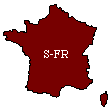Antonio the Sixth
Antonio V
Atlas Institution
    
Posts: 58,384

Political Matrix
E: -7.87, S: -3.83



|
 |
« Reply #26 on: August 15, 2013, 04:26:16 PM » |
|
The Second Republic made a triumphant entry with the 1995 election, with brand new parties competing for the first time while others disappeared into oblivion. The result was a narrow majority for the left-wing coalition, helped by the Lega's failure to break the newly established 4% threshold. With over a third of the vote, the alliance of the right led by Silvio Berlusconi also established itself as a major political player, while centrist forces were marginalized. At the same time, the widespread distrust of the political class following the Tangentopoli scandals caused a significant drop in turnout.
The left-wing coalition led by Achille Ochetto and his PDS, won over 48% of the votes and 317 seats, just two more than an absolute majority. The collapse of the old party system had not affected the left's structural advantage among Italians, and Ochetto appeared as the most solid alternative to the old political system. PDS itself won over a third of the vote, 4.5 points more than the PCI had won alone 5 years earlier. The losses from the PCI's left were more than compensated by PSI voters flocking massively to the new left-wing party. Compared to the PCI, PDS made particularly solid gains in the North (benefiting from the Lega's collapse) and in the South, while it stagnated in the old Central Italy. PRC, meanwhile, won a major breakthrough with nearly 10% of the votes, most of them from traditionally communist strongholds. The Greens, on the other hand, experienced a 3-point decline, though it remained a significant player at 5%. They were probably hurt by the concentration of votes on the PDS.
While on the losing side of the election, Berlusconi's brand-new right-wing coalition nonetheless realized a major breakthrough with 34% of the vote. Undoubtedly, Berlusconi's flamboyant style had energized right-wing voters more than they had been in several decades. Berlusconi's own Forza Italia, created only a few months before, established itself as the leading party of the right, by far, with nearly 22% of the vote For the record, this is actually more than IRL. Good job, people! The newly founded party won many former PLI voters, but also siphoned off Lega votes in the North. It won its best results in the Milan consituency (though it was narrowly beaten by PDS there) and in the Northern Lombardy one. It also won the other traditionally conservative regions of the North, and Sicily, where voters appreciated its populist style. On the other hand, AN's results were almost unchanged from DN's previous ones, establishing itself at a modest 11%. During the campaign, Fini was largely overshadowed by Berlusconi, and even DN's transformation did not catch the interest of right-wing voters. Even worse was Lega Nord's fate. Bossi's party lost over 7 points, retaining only 1.5% of the votes and proving that its 1990 breakthrough was a mere fad.
The parties outside of the two major political blocs did rather poorly, being the victims of the newborn bipolarization of the political spectrum. Despite this, the Radical list did rather well, reversing a 15-year trend of decline. It gained nearly 5 points for an overall result of 8.5%, its best result since 1984. The resolutely anti-establishment party reaped benefits form the widespread disaffection with the political class following corruption scandals. Finally, Orlando's newly-founded PPI largely flopped, winning only 6% of the vote (less than half of the PDP's showing in 1990). It was certainly the biggest victim of political polarization, as its left-wing voters joined the PDP while right-wingers were attracted by FI.
Meanwhile, in the abrogative referendums, the voters:
- Massively approved drug decriminalization, by an over 2-to-1 margin. Support was particularly overwhelming in big cities, in the North and in the most left-wing areas.
- Narrowly rejected the abolition of ministries, though urban areas of the North and the populist Sicily and Calabria supported the measure.
- Approved the liberalization of labor union representativity rules, by a whopping 4-to-1 margin. The measure got near-unanimous support in the left-wing core.
- Rejected, by two thirds, the repeal of anti-mafia legislation. The strongest opposition came from authoritarian regions of the South-Centre and Deep South, though the mafia's "campaigning" boosted the yes vote in Calabria and Sicily.
- Rejected RAI's privatization by a 10-point margin. Only the right-libertarian Northeast and the populist Sicily supported the measure, while the left-wing regions turned out in full force against the measure.
- Approved, on the other hand, the initiative to break Mediaset's oligopoly on national TV. Over 60% of the voters supported the measure, particularly in the left-wing core. Only Berlusconi's Milan stronghold voted against it.
- Approved the liberalization of commercial regulation by a 15-point margin, with only the most left-wing areas voting against it, while strong support came from the Northeast and Deep South.
- Massively approved the direct election of mayors, by over 3/4 of the vote, in a pretty geographically uniform vote.
|

